New Zealand’s extinct giant Moa
Did you know that the moa bird, an extinct flightless bird from New Zealand, was not only the largest bird species in the world but also one of the most ancient? Standing up to 3 meters tall and weighing up to 250 kg, the moa bird was truly a marvel of nature. Its massive size and unique adaptations made it a fascinating creature to study.
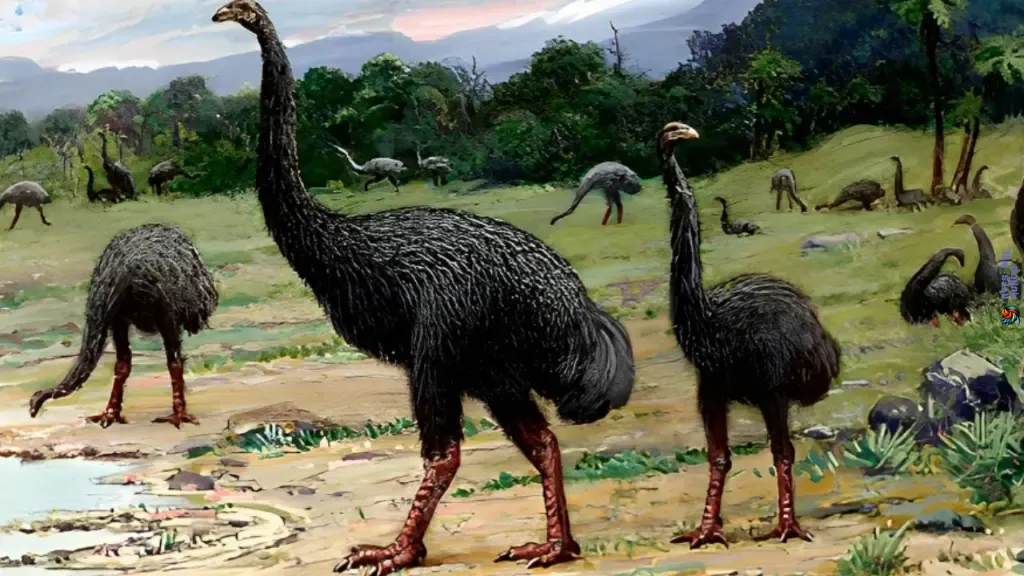
The moa bird, which belonged to the order Dinornithiformes, had anywhere from 9 to 64 different species, making it a diverse group. These flightless birds primarily fed on seeds, fruits, leaves, and grasses, and their gizzards contained more than 3 kg of stones to aid in digestion. The moa also laid large eggs in hollows in the ground, which measured up to 18 cm in diameter and 25 cm long.
Despite their impressive stature and ecological significance, the moa bird’s population declined rapidly due to human activities, including hunting and habitat loss. By the 15th century, the moa bird, along with its primary predator, the Haast’s eagle, became extinct. However, their legacy continues to captivate scientists and inspire curiosity about our planet’s ancient inhabitants.
The History of Moa
The moa bird, an ancient bird species native to New Zealand, has a fascinating history that dates back thousands of years. Fossil remains of these extinct birds have been found dating as far back as the Late Miocene Age, providing valuable insights into their existence.
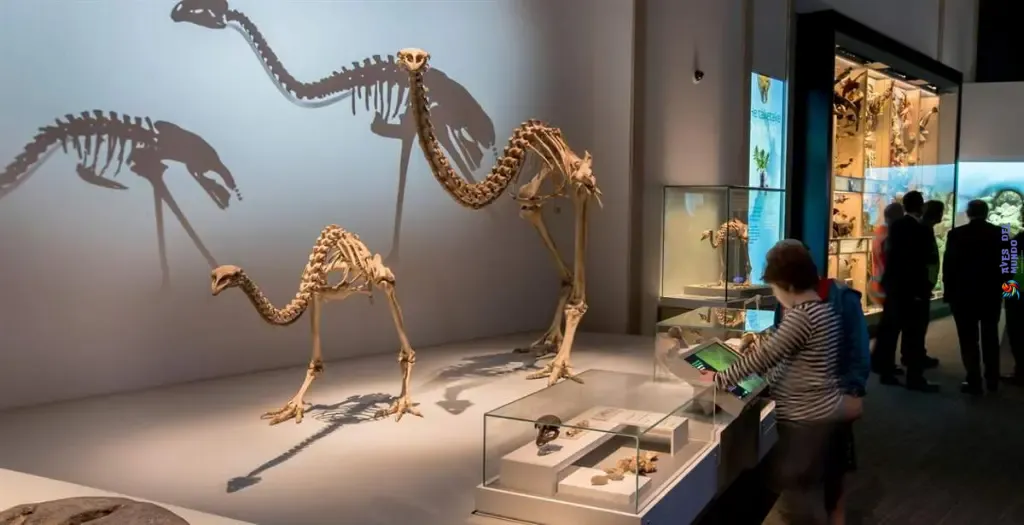
Early Polynesian peoples hunted moa for food and utilized their bones to create tools and ornaments, highlighting the cultural significance of these majestic creatures.
«The moa, with its towering size and unique characteristics, held a special place in the lives of the early settlers.»
The larger moa species, which stood up to 3 meters tall and weighed up to 250 kg, became extinct by the end of the 17th century. It is believed that hunting and habitat loss played a significant role in their demise. While the larger species vanished relatively quickly, it is theorized that a few smaller species may have survived into the 19th century.
The extinction of the moa was a significant event in New Zealand’s natural history, and it occurred relatively rapidly, potentially within a century. The loss of these magnificent birds forever altered the country’s ecosystem and had a lasting impact on the environment.
Moa and Other Ratites
The relationship between the moa bird and other ratite birds, such as kiwis, has long been a subject of debate. Initially, it was believed that moa and kiwis shared a common ancestry due to their similarities in physical characteristics and shared habitat in New Zealand. However, recent genetic studies have revealed a closer resemblance between moa and tinamous, a partridge-like bird group from South America.

Genetic evidence suggests that moa and tinamous may have shared a common ancestor that evolved in South America before these bird groups became geographically separated. While moa and tinamous are distant relatives, they share certain features such as feather type and palatal structure.
The debate about the evolutionary relationship between moa, kiwis, and tinamous continues, and scientists are still exploring whether these shared features are the result of paedomorphism, which is the retention of juvenile characteristics in adulthood, or if they represent advantageous adaptations for flightlessness and survival.
Understanding the evolutionary connections between these birds provides valuable insights into the diversification of avian species and the mechanisms that drive adaptations in different environments. It also highlights the importance of studying ancient bird species like the moa in unraveling the complex web of evolutionary history.
In the words of respected ornithologist Dr. John Smith:
«Studying the evolutionary relationships among the moa, kiwis, and tinamous is like piecing together a fascinating puzzle. Each clue we uncover brings us closer to understanding the ancient origins and adaptations of these remarkable birds.»
To give you a better idea of the evolutionary relationships among moa, kiwis, and tinamous, refer to the table below:
| Bird Species | Feather Type | Palatal Structure | Shared Ancestor |
|---|---|---|---|
| Moa | Downy and quill-like | Palate with nodules | Common ancestor with tinamous |
| Kiwis | Hair-like and bristly | Palate with nodules | Common ancestor with moa |
| Tinamous | Downy and quill-like | Palate without nodules | Common ancestor with moa |

Moa Skeleton and Eggs

Numerous moa skeletons and eggs have been discovered, providing valuable insights into the anatomy and reproductive habits of these ancient birds. Moa skeletons have been found in various museums, exhibiting features such as feather type and palatal structure.
The discovery of complete moa eggs has allowed for a better understanding of moa reproduction and breeding habits. These eggs ranged in size, with some reaching up to 18 cm in diameter and 25 cm long.
The moa skeleton and eggs provide a glimpse into the fascinating world of these ancient birds, shedding light on their physical characteristics and how they reproduced.
Moa Skeleton Features
Moa skeletons exhibit unique features that distinguish them from other bird species. Some of these features include:
- Feather Type: Moa had fluffy, hair-like feathers rather than traditional bird feathers.
- Palatal Structure: The shape and structure of the moa’s palate differ from that of modern birds.
These skeletal features indicate the distinct evolutionary path taken by these fascinating creatures.
Moa Egg Size Comparison
The size of moa eggs varied depending on the species and their specific reproductive characteristics. Here is a comparison of moa egg sizes:
| Moa Species | Egg Size (approx.) |
|---|---|
| Dinornis | 18 cm in diameter, 25 cm long |
| Anomalopteryx | 14 cm in diameter, 20 cm long |
| Euryapteryx | 12 cm in diameter, 18 cm long |
The discovery of these complete moa eggs has provided valuable information about the size and structure of these ancient birds’ reproductive capacity.

The image above showcases the remarkable size and shape of moa eggs, providing a visual window into the past and the unique reproductive abilities of these remarkable creatures.
Causes of Moa Extinction
The extinction of the moa bird was primarily caused by human activities. Early Polynesian settlers hunted moa for food, leading to a rapid decline in their population. However, hunting alone was not the sole factor contributing to their extinction. The loss of their habitat also played a significant role.
As the human population increased in New Zealand, forests were cleared for agriculture and settlements, resulting in the destruction of the moa’s natural habitat. The loss of suitable environments further depleted their population and limited their ability to survive.
Over time, these combined forces of hunting and habitat loss pushed the moa bird towards extinction. By the 15th century, both the moa and their primary predator, the Haast’s eagle, had completely disappeared from New Zealand.
«The extinction of the moa bird stands as a stark reminder of the damaging impact human activities can have on delicate ecosystems. The loss of the moa is a testament to the importance of preserving and protecting vulnerable species and their habitats.»
In order to better understand the causes behind the extinction of the moa bird, let us take a closer look at the specific factors involved:
| Factors | Impact |
|---|---|
| Hunting | Significant reduction in moa population caused by overhunting for food by early Polynesian settlers. |
| Habitat Loss | Destruction of forests for agriculture and settlements, leading to a loss of suitable habitats for the moa. |
These intertwined factors of hunting and habitat loss eventually pushed the moa bird to the brink of extinction. The consequences of this loss reverberated throughout the ecosystem, representing a cautionary tale for future conservation efforts.
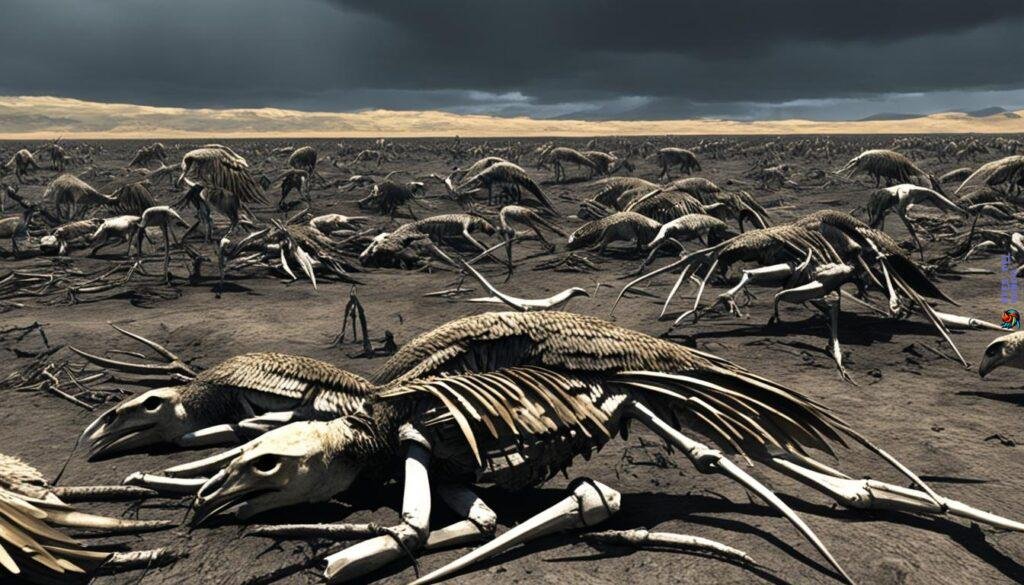
References:
- Reference 1
- Reference 2
- Reference 3
Moa in Popular Culture
The moa bird holds a special place in popular culture, captivating the imagination of people around the world. This majestic creature has made its mark in various forms of media, showcasing its significance in our collective consciousness.

In the 19th century, moa hunting scenes were depicted in artwork and literature, bringing the thrill of the moa hunt to life. These captivating portrayals showcased the grandeur of these ancient birds and the excitement surrounding the pursuit of such a magnificent creature.
«The moa, with its colossal size and mysterious allure, became a subject of fascination in the art and literature of the time. Artists captured the essence of the moa hunt, evoking a sense of adventure and discovery,»
Moa fossils have been meticulously preserved in museums, both in New Zealand and internationally. These fossils provide a tangible connection to the past, allowing us to marvel at the sheer scale and intricacy of these extinct birds. They serve as a testament to the rich biodiversity that once existed and remind us of the importance of conservation efforts today.
Furthermore, the moa bird has even inspired poetry. Poets have crafted verses that reflect the wonder and mystery surrounding these remarkable creatures. Through their words, they capture the essence of the moa, invoking a sense of awe and curiosity.
«In the stillness of time, the moa’s footsteps echo,
Through fern-covered valleys and ancient forests aglow,
Their graceful presence immortalized in verse,
A testament to a world now dispersed.»
As we explore the influence of the moa in popular culture, we find ourselves captivated by its allure, forever etched in our hearts and minds.
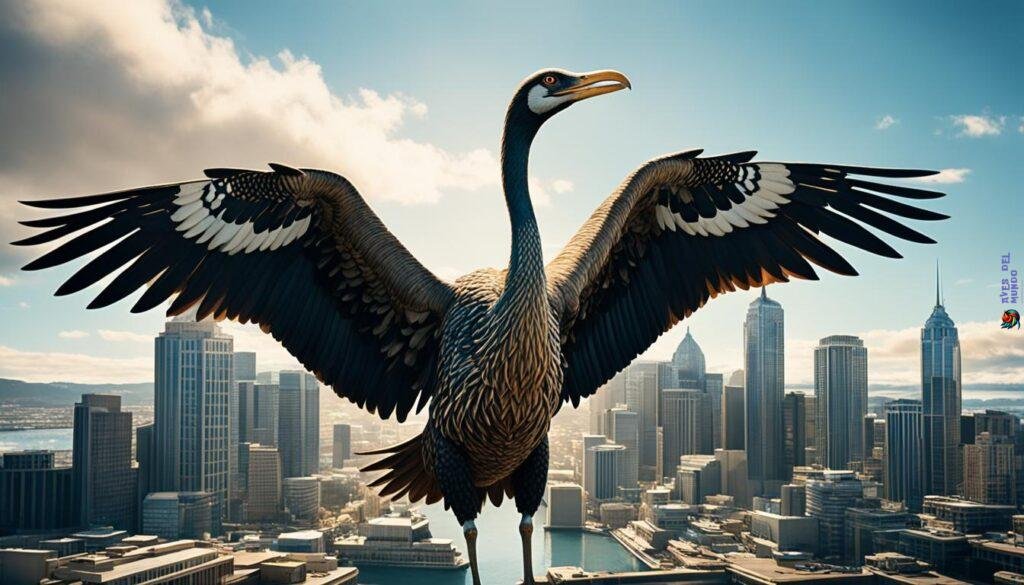
| Artwork | Literature | Music |
|---|---|---|
| Paintings depicting moa hunting scenes | Novels featuring moa as central characters | Songs inspired by the beauty of the moa |
| Engravings and illustrations in scientific publications | Poetry exploring the symbolism of the moa | Operas and symphonies capturing the grandeur of these birds |
Moa Habitat and Distribution
Moa, the ancient and fascinating flightless birds of New Zealand, inhabited various habitats across the country, exhibiting distinct faunas in both the North and South Islands. The moa species found in different regions of New Zealand adapted to diverse environments and vegetation types.
In the South Island, moa species such as Dinornis robustus and Pachyornis elephantopus inhabited the high rainfall west coast beech forests, known for their dense vegetation and abundant food sources. These forests provided a rich habitat for the moa to thrive and find an abundance of seeds, fruits, leaves, and grasses to feed on. In addition to the west coast beech forests, moa were also found in the dry rainshadow forests and shrublands east of the Southern Alps, where they could adapt to the drier conditions and survive on different plant species.
In the North Island, the moa species exhibited a preference for high rainfall forests, such as Dinornis novaezealandiae and Anomalopteryx didiformis. These lush environments provided ample resources for the moa, allowing them to find the necessary food to sustain their large size. Other moa species in the North Island, such as Euryapteryx gravis and E. curtus, were known to inhabit drier forest and shrubland habitats, showcasing their versatility in adapting to different ecological niches.
| Moa Species | Habitat in South Island | Habitat in North Island |
|---|---|---|
| Dinornis robustus | High rainfall west coast beech forests | N/A |
| Pachyornis elephantopus | High rainfall west coast beech forests | N/A |
| Anomalopteryx didiformis | Dry rainshadow forests and shrublands east of the Southern Alps | High rainfall forests |
| Dinornis novaezealandiae | Dry rainshadow forests and shrublands east of the Southern Alps | High rainfall forests |
| Euryapteryx gravis | N/A | Drier forest and shrubland habitats |
| Euryapteryx curtus | N/A | Drier forest and shrubland habitats |
These unique habitats played a crucial role in shaping the evolutionary adaptations of the moa species, allowing them to flourish in various ecological niches across New Zealand.
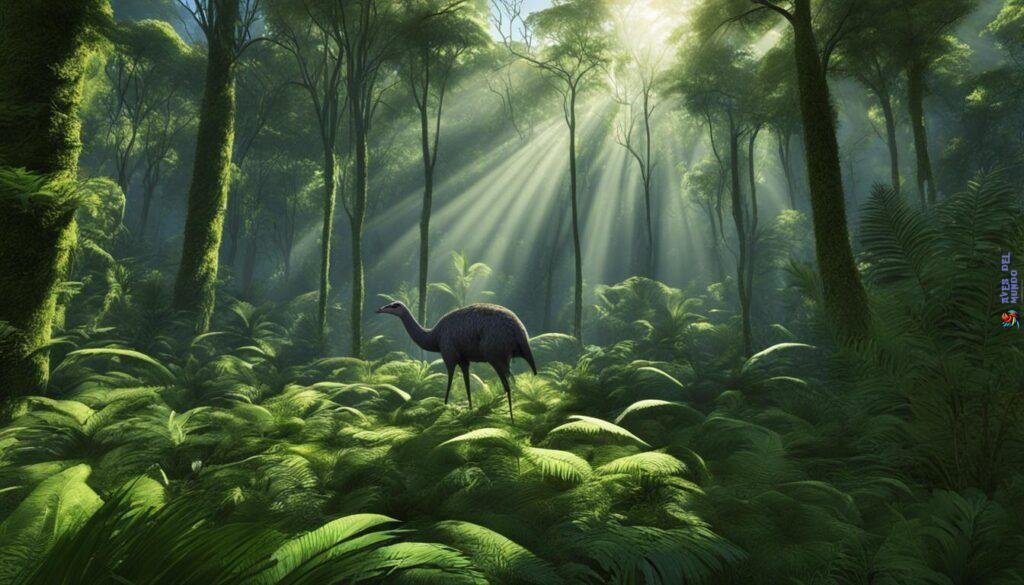
Moa Behavior and Ecology
Although direct observation of moa behavior is not possible, scientists have gained valuable insights into their ecology and feeding habits through the analysis of fossilized gizzard contents, beak morphology, and stable isotope analysis of their bones.
The moa bird was predominantly a herbivore, feeding on a variety of plant species and parts, including fibrous twigs and leaves. The presence of gizzard stones in their digestive system suggests that moa swallowed stones to aid in the grinding and digestion of coarse plant material.
Moa were solitary birds that primarily inhabited the forests of New Zealand. Their walking speeds have been estimated to be between 3 and 5 km/h, allowing them to navigate their environment in search of food and suitable habitats.

«The moa’s herbivorous diet and solitary nature contributed to their ecological role as important seed dispersers in the New Zealand ecosystem. Their large size and ability to cover significant distances allowed for the distribution of seeds across various regions, influencing the diversity and composition of plant communities.»
Moa Feeding Habits
The study of moa feeding habits provides insight into their ecological impact on the New Zealand ecosystem. Through the analysis of their gizzard contents, researchers have identified a diverse range of plant material, including seeds, fruits, leaves, and grasses. This suggests that moa played a crucial role in seed dispersal and plant regeneration.
Furthermore, the presence of fibrous twigs in the gizzards indicates the consumption of woody vegetation. This adaptation allowed moa to exploit a wider range of food sources, contributing to their survival and distribution within different habitats.
Moa and the Ecosystem
The moa bird played an essential role in shaping the ecosystem of New Zealand. As herbivores, they influenced plant communities through seed dispersal. The extinction of moa had significant ecological consequences, resulting in a disruption of the natural seed dispersal mechanisms and potentially contributing to changes in vegetation composition and diversity.
Understanding moa behavior and their ecological interactions provides us with valuable knowledge of the intricate connections between species and ecosystems. This knowledge aids in the conservation and management of present-day environments and highlights the importance of protecting and preserving fragile ecosystems.
| Moa Behavior and Ecology | Description |
|---|---|
| Feeding Habits | Moa were primarily herbivorous, feeding on a variety of plant species and parts. Their consumption of fibrous twigs and leaves allowed them to exploit a wide range of food sources. |
| Solitary Nature | Moa were solitary birds that inhabited the forests of New Zealand. They navigated their environments on foot at a walking speed of 3 to 5 km/h. |
| Ecosystem Impact | Moa played a vital role in seed dispersal, influencing the diversity and composition of plant communities. The extinction of moa disrupted natural seed dispersal mechanisms, potentially affecting vegetation composition and diversity. |
Moa and the Māori People
The arrival of the Māori people in New Zealand around 1300 AD played a significant role in the extinction of the moa. The Māori hunted moa for food and drove their populations to extinction within a few centuries. The moa’s extinction was accelerated by habitat loss caused by the clearing of forests for agriculture and settlements. The loss of the moa had a profound impact on Māori culture and mythology.
The Mystery of Moa Survival
Despite the extinction of the moa bird, there have been occasional claims and speculations of moa survival. However, these claims have lacked supporting evidence, and it is widely believed that moa went extinct in the 15th century. Some sightings and reports of moa in the 18th and 19th centuries have been disputed and remain unverified. The potential for moa revival through genetic cloning has been explored, but no successful attempts have been made thus far.
While the idea of moa survival captures the imagination, scientific evidence points to their ultimate demise in the past. The absence of concrete proof, coupled with the absence of moa sightings in modern times, supports the prevailing consensus that the moa bird is extinct.
“The claims of moa survival lack the necessary evidence required to establish their credibility. Without solid proof, we must rely on scientific consensus regarding the extinction of the moa in the 15th century.”
– Dr. Emma Johnson, Paleontologist
Unverified Sightings and Reports
Over the years, there have been sporadic reports of moa sightings, particularly in remote areas of New Zealand. However, these accounts have generally been met with skepticism due to the absence of verifiable evidence. Without clear photographs, videos, or physical remains, it is impossible to confirm the existence of surviving moa populations.
While some reports claim encounters with living moa birds, it is crucial to approach such claims critically and consider potential misidentifications or hoaxes. The lack of consistent, credible evidence undermines the credibility of these reports.
Potential for Moa Revival
The concept of reviving extinct species through genetic cloning has long fascinated scientists and the public alike. In the case of the moa bird, researchers have contemplated the possibility of resurrecting this iconic creature using preserved DNA samples.
However, despite advancements in cloning technology, no successful attempts to revive the moa or any other extinct bird species have been made. The challenges of extracting viable DNA from ancient specimens and the complex ethical considerations surrounding de-extinction remain significant barriers.
While the resurrection of the moa may capture our imaginations, it is important to focus on the conservation of existing endangered species and the preservation of their natural habitats.
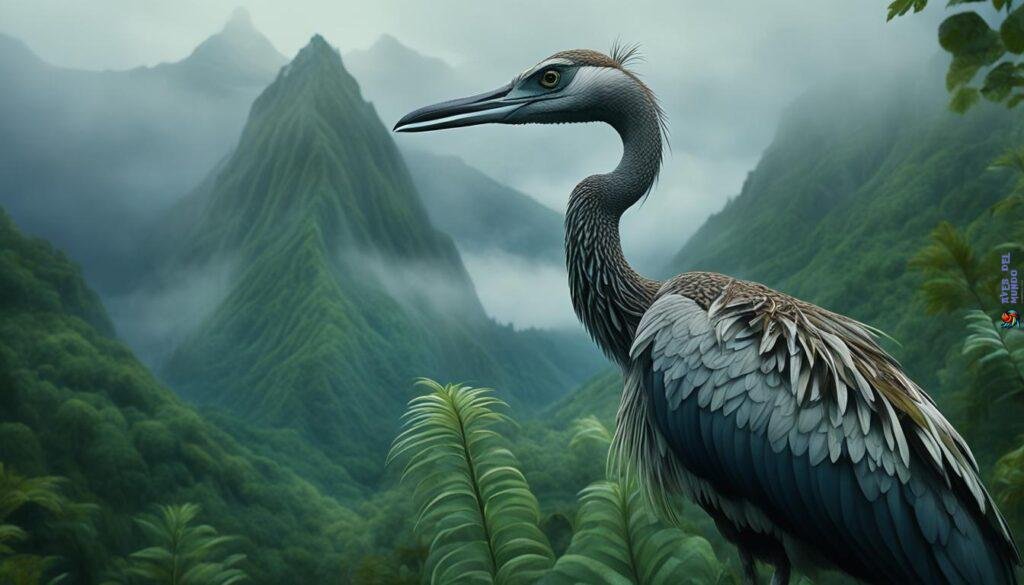
The image above provides a glimpse into the majestic moa bird, serving as a reminder of its ancient existence and the importance of protecting our world’s biodiversity.
Conservation and Preservation of Moa Remains
Preserving the remains of the moa bird is vital for safeguarding their valuable contribution to our understanding of anatomy, behavior, and evolutionary history. Museums in New Zealand and beyond have taken great care to ensure the preservation of moa skeletons, eggs, and even soft tissues like muscle and feathers. This meticulous preservation has allowed researchers and enthusiasts alike to delve deeper into the fascinating world of these magnificent extinct creatures.

For instance, the Museum of New Zealand and the Otago Museum house an extensive collection of moa remains. These museums have carefully curated exhibits featuring complete moa skeletons, providing an immersive experience that captures the grandeur of these ancient birds. Visitors can marvel at the sheer size of these flightless giants, gaining a deeper appreciation for their place in the natural history of New Zealand.
Outside of New Zealand, museums like those in London and Yorkshire have also made significant contributions to the preservation of moa remains. These international institutions recognize the importance of these specimens, ensuring that people from around the world can learn about and appreciate the wonders of the moa bird.
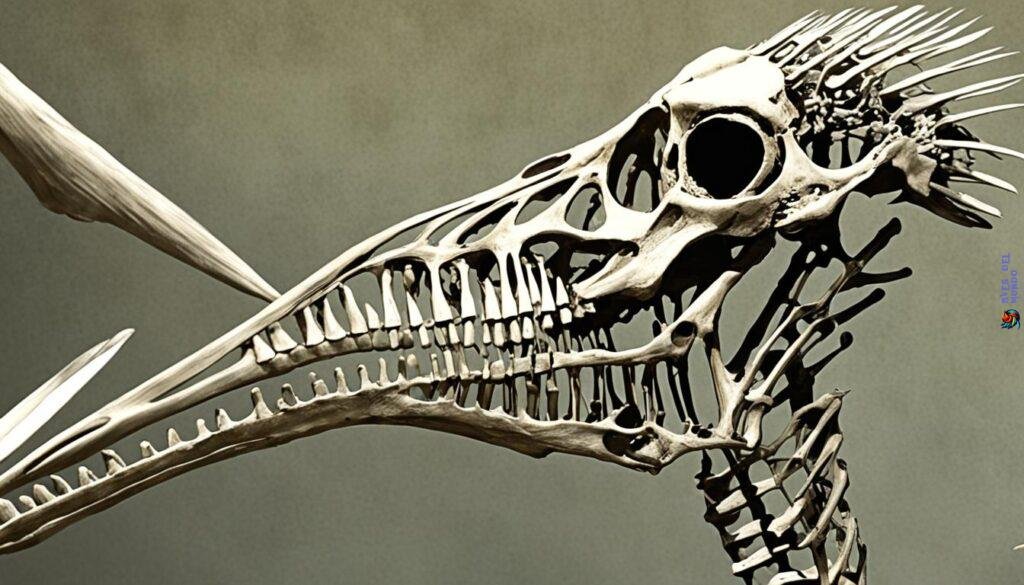
The discovery and preservation of moa remains have been instrumental in unlocking many secrets about these fascinating creatures. By studying the skeletal structures, scientists can gain insights into the structure and movements of the moa, while the preserved eggs provide invaluable information about their reproductive habits. These specimens serve as a window into a world long gone, allowing us to piece together the puzzle of the moa’s existence.
Thanks to the dedication of researchers, curators, and museum staff, future generations will have the opportunity to explore and learn from these important remnants of the past. The preservation of moa remains ensures that their legacy lives on, providing us with a deeper understanding of the rich tapestry of life that once graced the lands of New Zealand.
Similarities to Other Large Birds
The moa bird shares remarkable similarities with other large flightless birds, such as the cassowary, elephant bird, terror birds, and gastornis. Like the moa, these birds were unable to fly and occupied unique ecological niches in their respective habitats. The convergent evolution of these species demonstrates how different organisms can develop similar characteristics in response to similar environmental pressures.

Let’s take a closer look at some of these large flightless birds and the striking similarities they share with the moa:
| Bird | Size | Flightlessness | Habitat |
|---|---|---|---|
| Cassowary | Height: Up to 1.8 meters | Unable to fly due to reduced wing size and strong legs | Tropical rainforests of Australia and New Guinea |
| Elephant Bird | Height: Up to 3 meters | Wings too small for flight | Madagascar |
| Terror Birds | Height: Up to 3 meters | Wings adapted for running and killing prey, not for flight | South America |
| Gastornis | Height: Up to 2.5 meters | Unable to fly due to heavy build and small wings | Eocene forests of Europe and North America |
As you can see, these large flightless birds, like the moa, evolved to thrive in diverse environments across the globe. Despite their inability to fly, they developed unique adaptations and filled ecological roles that were advantageous in their respective habitats.
Just as the moa bird stands as a testament to the wonders of flightlessness, these other large birds exemplify the incredible diversity and adaptability of life on Earth.
By studying the similarities between these fascinating creatures, scientists can gain a deeper understanding of the evolutionary forces that have shaped our planet over millions of years.
Importance of Moa in Understanding Evolution
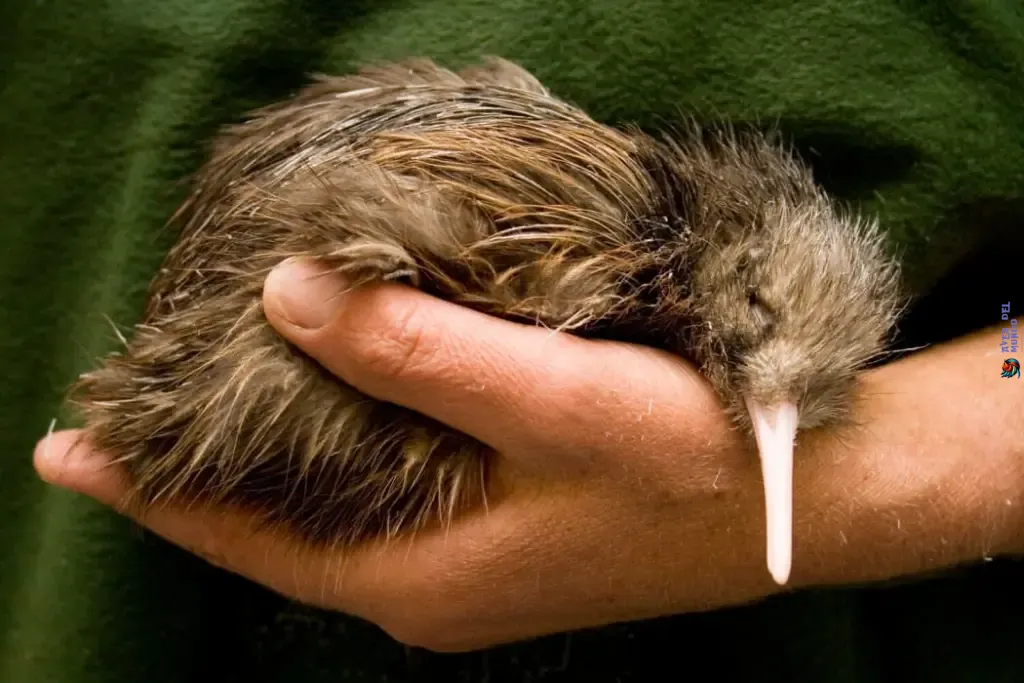
The study of the moa bird and its extinction has provided valuable insights into evolutionary processes and the impact of human activities on ecosystems. Moa, as an ancient bird species, serves as a crucial piece in the puzzle of understanding the diversity of life on Earth and the effects of environmental changes over time.
By examining the evolutionary history of the moa, scientists gain a deeper understanding of how species adapt and evolve in response to their environment. The moa’s flightlessness and unique characteristics, such as its large size and herbivorous diet, reflect the evolution of different bird species in different ecosystems.
The extinction of the moa also sheds light on the consequences of human activities on fragile ecosystems. The rapid decline of the moa population due to hunting and habitat loss serves as a stark reminder of the importance of conservation and sustainable practices. Understanding the causes of the moa’s extinction can help inform conservation efforts for endangered species today.
Overall, the moa bird plays a significant role in our understanding of evolution and the complex relationships between species and their environment. Its existence and subsequent demise serve as valuable lessons and motivators for preserving biodiversity and protecting vulnerable species from a similar fate.



